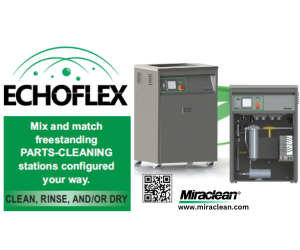Do You Want Your Business to Continue?
Share this roadmap with your financial advisor to start planning for succession.
Over the years, I’ve asked this question hundreds of times to the Joes of the business world. The longer my readers have been in business and the more success the business has enjoyed, the louder and more passionate the ‘yes.’ Yet, after 45 years of working with readers, it’s clear that long-term business owners have basically the same succession problems.
Let’s start with the three most common: 1) How do I transfer my business to my business kids without getting killed by taxes? 2) How do I treat the non-business kids fairly? 3) How do I sell my business to my key employees when they have no money? (This problem comes up when Joe has no child or other relative to take over the business.)
Okay, here’s a real-life example. Joe, a reader from Kansas, was the perfect poster-boy for a successful business owner of his generation. He started from scratch, built a successful business and wanted to transfer it to Sam, his son. Joe married Mary right after they graduated from high school. Joe worked hard and played hard. He was rich, but didn’t feel rich. In general, he was a happy camper.
Unfortunately, his estate/wealth transfer/succession plan was a disaster. Mary knew it and prevailed upon Joe to call me. Joe basically had five types of assets: 1) Success Co., worth $6.5 million; 2) a residence worth $700,000; 3) a rollover IRA worth $900,000; 4) $3.5 million in real estate and liquid investments; and 5) an $800,000 death benefit life insurance on Joe. For estate tax purposes, if Joe got hit by the proverbial truck and his wife Mary predeceased him, his estate would be worth $12.4 million. Taxes at Joe’s death, using his present wealth transfer plan and 2011 tax rates would be about $5.5 million.
What are Joe’s goals? 1) “Enable me and Mary to maintain our lifestyle;” 2) “Get Success Co. to Sam, paying the least amount of tax, as soon as possible, yet retain control for as long as I live;” 3) “Have each of my two daughters, not in the business, receive the same amount of our estate as Sam receives.” And then Joe, with an I-know-it-can’t-be-done laugh, said: “Irv, maybe you can get all of my assets to my family with no reduction for taxes?”
The first step was to reduce the value of Joe’s assets for estate tax purposes, yet keep him in control. Without covering every nuance of the plan, this is what we did on an asset by-asset basis:
1) We sold Success Co. to an intentionally defective trust (IDT). Only the nonvoting stock (which we created) was sold, while Joe kept all of the voting stock, thus retaining control. The IDT is a strategy that allows transfer of a family business to any person tax-free. 2) We transferred his residence to a qualified personal residence trust. 3) We started a profit-sharing plan. 4) We transferred all other assets—the real estate and liquid assets—to a family limited partnership; and 5) We transferred life insurance to an irrevocable life insurance trust (ILIT).
These five strategies lowered the total value of the assets for estate tax purposes to about $6.5 million. We used Joe and Mary’s unified credits ($1 million tax-free for each) in the process, leaving a potential tax liability (when Joe and Mary both die) of about $3.2 million.
Since we already had $900,000 of potential insurance proceeds in the ILIT, we only needed about $2.3 million more in tax-free wealth to get all of Joe’s assets to his family intact, taxes paid in full. We bought a $3 million second-to-die life insurance policy on Joe and Mary, using a subtrust as part of the profit-sharing plan. When both Joe and Mary have passed on, the $3 million will go to Joe’s family, tax-free, to pay any estate tax liabilities. Final result: All of Joe’s objectives were accomplished and his wealth (more than $12 million) will go to his family intact, with all taxes paid in full.
If your succession plan problems are similar to Joe’s, the above plan should give you a roadmap for how to proceed.
Related Content
PCI Names 2023 Board of Directors, Executive Officers
The next individuals serving on PCI's board of directors and as executive officers have been selected.
Read MoreUnderstanding and Managing White Spots on Anodized Aluminum
Having trouble with spotting defects when anodizing? Taj Patel of Techevon LLC offers a helpful overview of the various causes of white spots and potential solutions.
Read MoreTop Shop’s Journey to Building a Unique Brand
Since this new Ohio plater took over the space and assets of a former plating business, it is intentional about setting itself apart from prior ownership.
Read MoreBusiness Card Doubles as a Wet Film Thickness Gauge
The customizable card can be used to measure wet film thickness.
Read MoreRead Next
Delivering Increased Benefits to Greenhouse Films
Baystar's Borstar technology is helping customers deliver better, more reliable production methods to greenhouse agriculture.
Read MoreEpisode 45: An Interview with Chandler Mancuso, MacDermid Envio Solutions
Chandler Mancuso, technical director with MacDermid Envio discusses updating your wastewater treatment system and implementing materials recycling solutions to increase efficiencies, control costs and reduce environmental impact.
Read MoreEducation Bringing Cleaning to Machining
Debuting new speakers and cleaning technology content during this half-day workshop co-located with IMTS 2024.
Read More

























